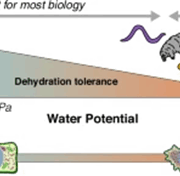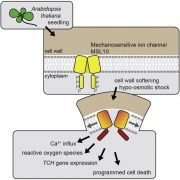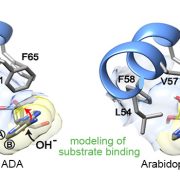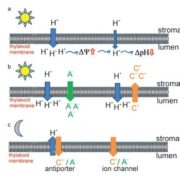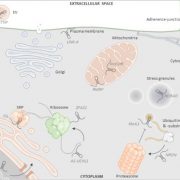ABA-induced stomatal closure involves ALMT4, a phosphorylation-dependent vacuolar anion channel
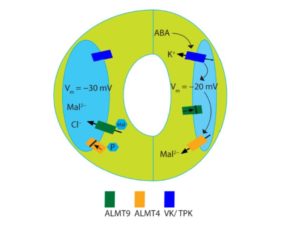 Changes in guard cell turgor pressure result in stomatal opening and closing, balancing CO2 uptake with transpiration. These dynamics have been studied as early as the 1800s and much knowledge has been gained regarding the components involved in this process, yet we are still far from a unified model and many questions still remain. Eisenach et al. identified an ion channel involved in the ABA-induced stomatal closure response pathway. ALMT4 is upregulated in guard cells with exposure to ABA and almt4 mutants are hyposensitive to ABA, displaying impairments in ABA-induced closure and ABA-inhibited opening. Electrophysiological characteristics analyzing the I-V (current-voltage) relationship of ALMT4 compared to introduced phophomimetic and dephosphomimetic mutants ALMT4 S382E and ALMT4 S382A, respectively, found that: ALMT4 serine-382 phosphorylation deactivates current activity; the dephosphomimetic mutation leads to constitutive activation; and ALMT4 is involved in the release of Mal2- from the vacuole to the cytoplasm of guard cells. These findings add another piece to the puzzle in our quest to understand stomatal dynamics. (Summary by Alecia Biel) Plant Cell 10.1105/tpc.17.00452
Changes in guard cell turgor pressure result in stomatal opening and closing, balancing CO2 uptake with transpiration. These dynamics have been studied as early as the 1800s and much knowledge has been gained regarding the components involved in this process, yet we are still far from a unified model and many questions still remain. Eisenach et al. identified an ion channel involved in the ABA-induced stomatal closure response pathway. ALMT4 is upregulated in guard cells with exposure to ABA and almt4 mutants are hyposensitive to ABA, displaying impairments in ABA-induced closure and ABA-inhibited opening. Electrophysiological characteristics analyzing the I-V (current-voltage) relationship of ALMT4 compared to introduced phophomimetic and dephosphomimetic mutants ALMT4 S382E and ALMT4 S382A, respectively, found that: ALMT4 serine-382 phosphorylation deactivates current activity; the dephosphomimetic mutation leads to constitutive activation; and ALMT4 is involved in the release of Mal2- from the vacuole to the cytoplasm of guard cells. These findings add another piece to the puzzle in our quest to understand stomatal dynamics. (Summary by Alecia Biel) Plant Cell 10.1105/tpc.17.00452


